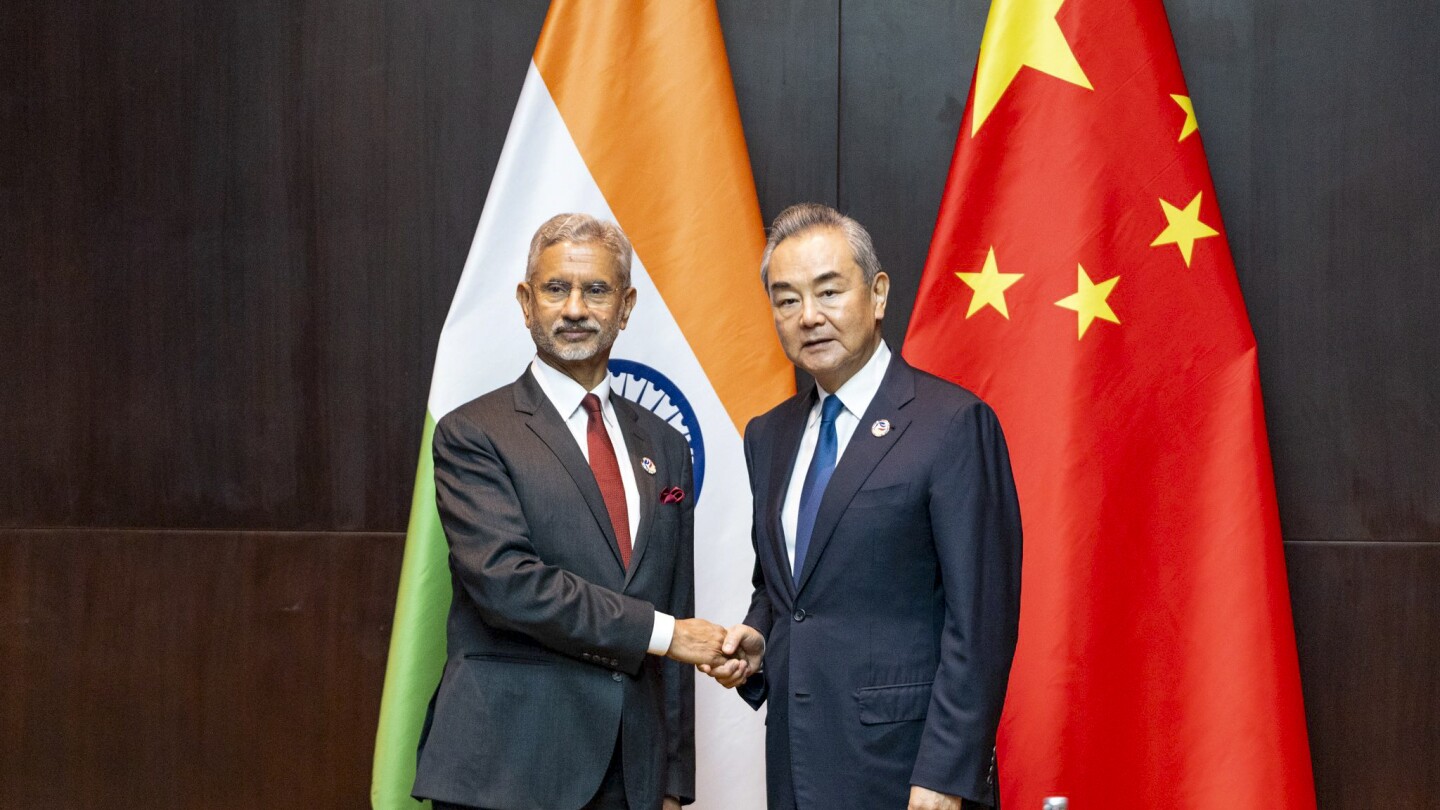NEW DELHI (AP) — India and China have agreed to work urgently to achieve the withdrawal of tens of thousands of troops stationed along their disputed border in a long-running standoff, India’s government said.
Indian Foreign Minister Subrahmanyam Jaishankar met his Chinese counterpart, Wang Yi, on Thursday on the sidelines of Association of Southeast Asian Nations meetings in Laos, where they stressed the need for an early resolution of outstanding issues along the disputed Line of Actual Control, the long Himalayan border shared by the two Asian giants.
On the night of 15 June 2020, soldiers from India and China engaged in what can only be described as medieval warfare on treacherous mountain terrain at an altitude of 4,200m, in the disputed grey zone along the Indo-Chinese frontier. For over seven hours, in pitch darkness, they battered each other with nail-studded wooden staves and iron rods wrapped in barbed wire, hurled rocks and fought with their bare hands. Day dawned on the stark, inhospitable Himalayan landscape, revealing 78 Indian soldiers wounded and 20 dead, most from exposure or drowning after being thrown into the freezing waters of the Galwan river below. Some of the bodies had floated downstream and were recovered further south at the point where the Galwan meets the Shyok. China remains tight-lipped about casualty numbers but Indian sources suggest the People’s Liberation Army (PLA) lost more than 40 men. In keeping with a 1993 protocol signed by the two countries, no firearms were used.
This episode followed several weeks of clashes along India and China’s 3,488km-long border, which has never been clearly demarcated. Since the 1962 war between the two countries, this has been known as the Line of Actual Control (LAC) and it includes a grey zone that falls within territory claimed by both sides. Since each side has its own view of where the line runs, their claimed borders criss-cross and overlap in many places, and clashes between patrols, incursions (even unintended) and other transgressions are common. However, the fatalities on 15 June were the first in 45 years.
For several decades, despite these regular scuffles, India and China have achieved the remarkable feat of maintaining a largely peaceful border, resolving disputes through talks at military or diplomatic level. In 1988 they agreed to set the border question aside in order to concentrate on other aspects of their relationship.
As a westerner, I have probably no understanding what that relationship is like outside of our media. Do these two states actually have issue with each other, or are they gonna wake up one day and realize they are 3/8 of the planet and start rattling their collective sabre.
They have had skirmishes in the past and they will have issues very soon as the Himalayan glaciers start to disappear since both nations rely on them for a large amount of their fresh water. I think they’re both highly aware of that.
But also, Modi is a Hindu nationalist and Xi is an ethnic Chinese nationalist. Rulers of ethnostates stick together!
Rulers of ethnostates stick together!
This is sarcasm, right?
Not really. See Germany, Italy and Japan. “All of our people stay in our country and all of your people stay in your country” is a good way to make allies with other bigots.
each see each other as a threat. there’s disputes on various territories across the 4k km himalayan border for one. both countries fought a war in the 1970s around these disputes and, by all reliable accounts, it was india that ceded territory then.
separately, india has provided sanctuary to the current dalai lama for many, many years now and also is a refugee base for tibetans, which mr. xi and his folks don’t appreciate.
india has also banned tiktok since its inception as well as access to alibaba and other online chinese stores.
china’s relationship with indian neighbours is seen as a threat as well, be it of a strategic nature such as their belt and road initiative with pakistan, their predatory relationship over sri lanka after drowning them with easy loans, or their latest “coup” in the maldives where the long-standing india-friendly government lost out in the last elections to a party that campaigned on “india out” and who were very pally with winnie the pooh and gang.
the geopolitical relationship is stereotypical of two neighbours who hate each other so much that each would go out of their way to torment the other.
Can we say 4 mega meters? I know I’d think millimeter if it was mm,but if it was Mm would you assume there was a mistake or would it make sense?





